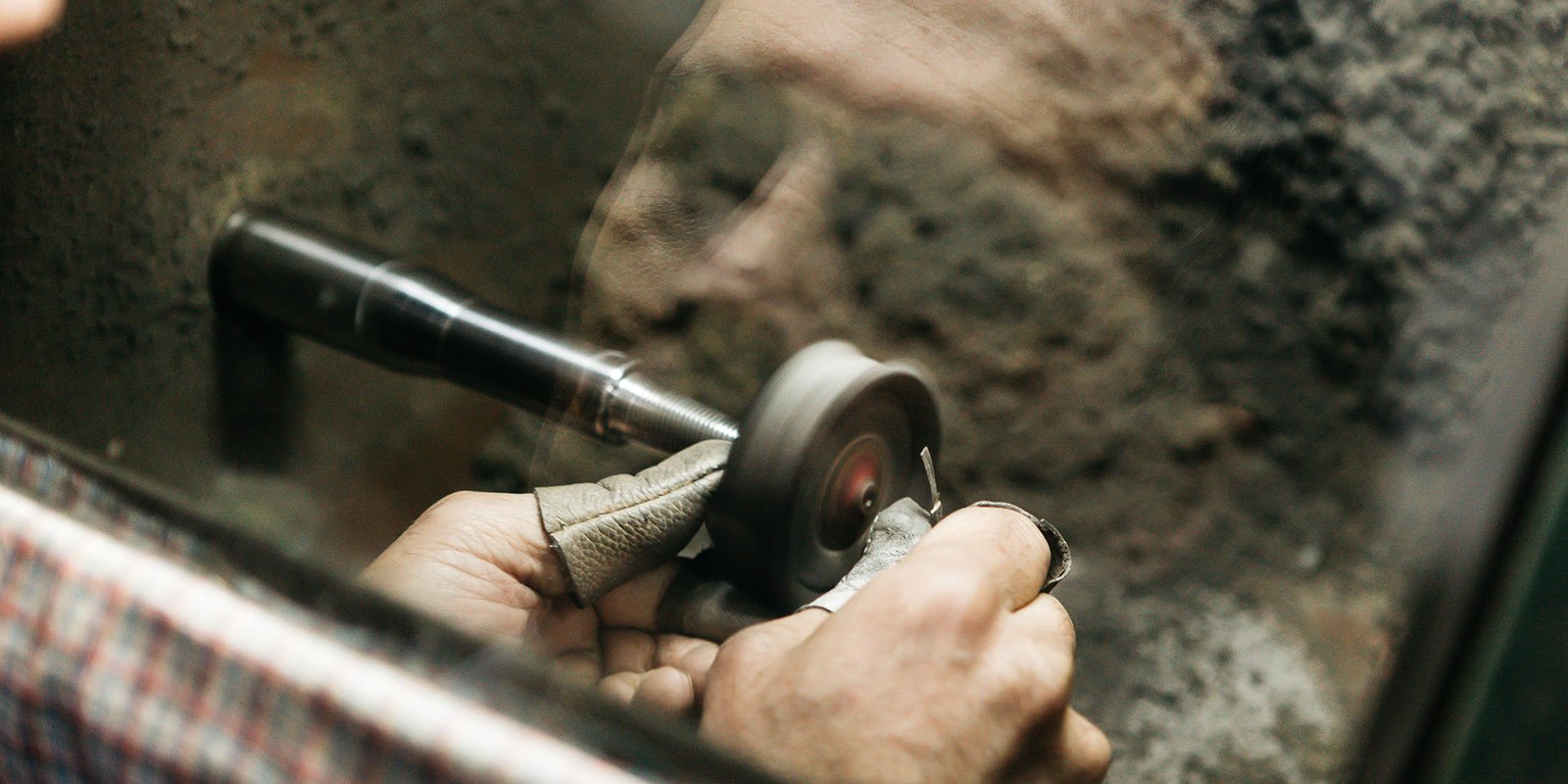The Art of the Filigron over time
The origin of the Filigran dates back to the third millennium BC in Mesopotamia. The oldest pieces date from 2500 BC and were discovered in the UR graves in present -day Iraq. Other pieces, discovered in Syria, are approximately 2100 BC.
He arrived in Europe through commercial routes in the Mediterranean Sea, where he became relatively popular in Greek and Roman civilizations. The oldest discoveries of jewelery in Filigrana were made in present-day Italy and is estimated to be from the 19th century. XVIII BC was also during the Roman Empire that originated the very word “Filigran”: the oldest discoveries were made in present -day Italy, and date back to the 19th century. XVIII BC
However, since the Middle East was a crossroads of cultures, the Filigran continued its trip and crossed borders to India and China. In the Far East, it was used above all as a decorative element and not as a jewelery. We found, for example, sculptures coated in Filigree, teapots, dishes or boxes.
Of course, the filigree of this remote time was not the same as we know these days: the patterns were different, just like the use. But the similarity of the techniques used leaves no room for doubt - we have been able to identify these secular pieces as specimens of Filigran.
So what distinguishes the Philigore? Simple, the way different thin strands draw standards and are welded together to create a much larger piece. No other jewelery art uses a similar fusion technique to add gold wires. Today - as for thousands of years - the different wires that make up each piece unite only with the heat, without resorting to any other material or turns on.
We can also say that there is no other goldsmith technique in which so few metals are used to create such large and extraordinary forms. In some hearts in Filigran, for example, half the "surface" of the piece can be air!

The Filigran in the Iberian Peninsula
The oldest pieces in filigree Discoveries on the Iberian Peninsula dates back to 2000 - 2500 BC, but its origin is unclear. Possibly, these pieces belonged to traders or browsers from the Middle East and were not manufactured here.
Only during the rule of the Romans, during the century. II BC, began to exist in the mining exploration peninsula - out of curiosity, it was during this period that the mines of the mountains of Pia and Banja began in Gondomar.
But only thousands of years later, in the 19th century. VIII AD, we were able to ensure that the Philigonal was being developed and produced in Portugal. It was with the arrival of Arab peoples that new standards emerged and that, gradually, the Peninsula's Philigore began to differentiate from the Philigore from other parts of the world.
While in the neighboring Spain the tradition of the Philigher was lost, in Portugal he was investigated. From the century. XVII, the Portuguese Filigran already had its own imagination and molds very different from any other Philigore.

The shapes and styles of the Portuguese Filigron
THE Portuguese filigree Mostly representing nature, religion and love:
- The sea is represented with fish, shells, waves and boats;
-
Nature is the inspiration of flower, clovers and wreaths;
-
With religious motives, we find thecross, like the cross of Malta, and the reliquaries. More recently, the medals with Santos,angels andfigures religious;
-
Love, of course, is the inspiration of allheartsin Filigran.
Other iconic symbols of our Filigran have a historical origin or not fully clear. We talk about:
Viana's heart
Contrary to what one might think, the first purpose of the Viana's heart It was not a symbol of love, but a symbol of dedication and worship of the Sacred Heart of Jesus. It was Queen D. Maria I who, grateful for the "blessing" of having been granted a man son, had a heart executed in gold. .
Queen earrings
It is almost unanimous that the Queen earrings appeared in Portugal during the reign of Queen D. Maria I (1734 - 1816). The origin of the name, this, seems to reassemble to the reign of D. Maria II (1819 - 1853), who used a pair of these earrings on a visit to Viana do Castelo in 1852. After this visit, they became popular as a symbol of wealth and of
statusAnd they got the name "Queen Earrings". In other zones of Minho, it is still known as "in the fashion of the queen", "of noble woman" or "rich woman". But what is really curious are the drawings ofQueen earrings. It is stated that they will be a symbol of female fertility, since there is a round part, with a smaller circle connected to the main piece apparently: a symbol of the bond of the son to the mother of the mother, from which she will break free. The adherents of this theory also refer that the bottom of the earring is an inverted triangle, a female symbol at the time.
Racket
To the racket They began as the earrings of the humblest population and that the most privileged classes began to imitate. At its origin were the Castrejas rails, with inspiration in the growing room of the moon.
Accounts
You accountsThey are as old as the art of goldsmithing. Viana's accounts descend from Greek accounts: they are hollow inside, which makes them light, and perfectly spherical. They are distinguished, however, by the Filigran wire and a small point in the center. They arose for the difficulty in buying an entire filigree necklace: women were buying the bill until it could make an entire wire. There was also the advantage of changing the wire and leaving it from the intended length.
Portuguese filigree today
Today, the manufacture of Filigran in Portugal is mainly concentrated in the areas of Gondomar and Póvoa do Lanhoso. In Minho, the filigree continues to be associated with a wide tradition: the “Domingar Costumes”. Women's Minho costume is always complemented with several gold pieces, including necklaces and earrings that go from generation to generation.
Exclusively manual filigree
Unfortunately we could not guarantee the production of exclusively manual parts, there were no filling across the country to make the orders. But let's not deceive anyone, all the pieces that are exclusively manual will have a call for attention.
We want the exclusively manual filigree to survive and we will make our total contribution to its continuation.


 +60520 fans
+60520 fans





























